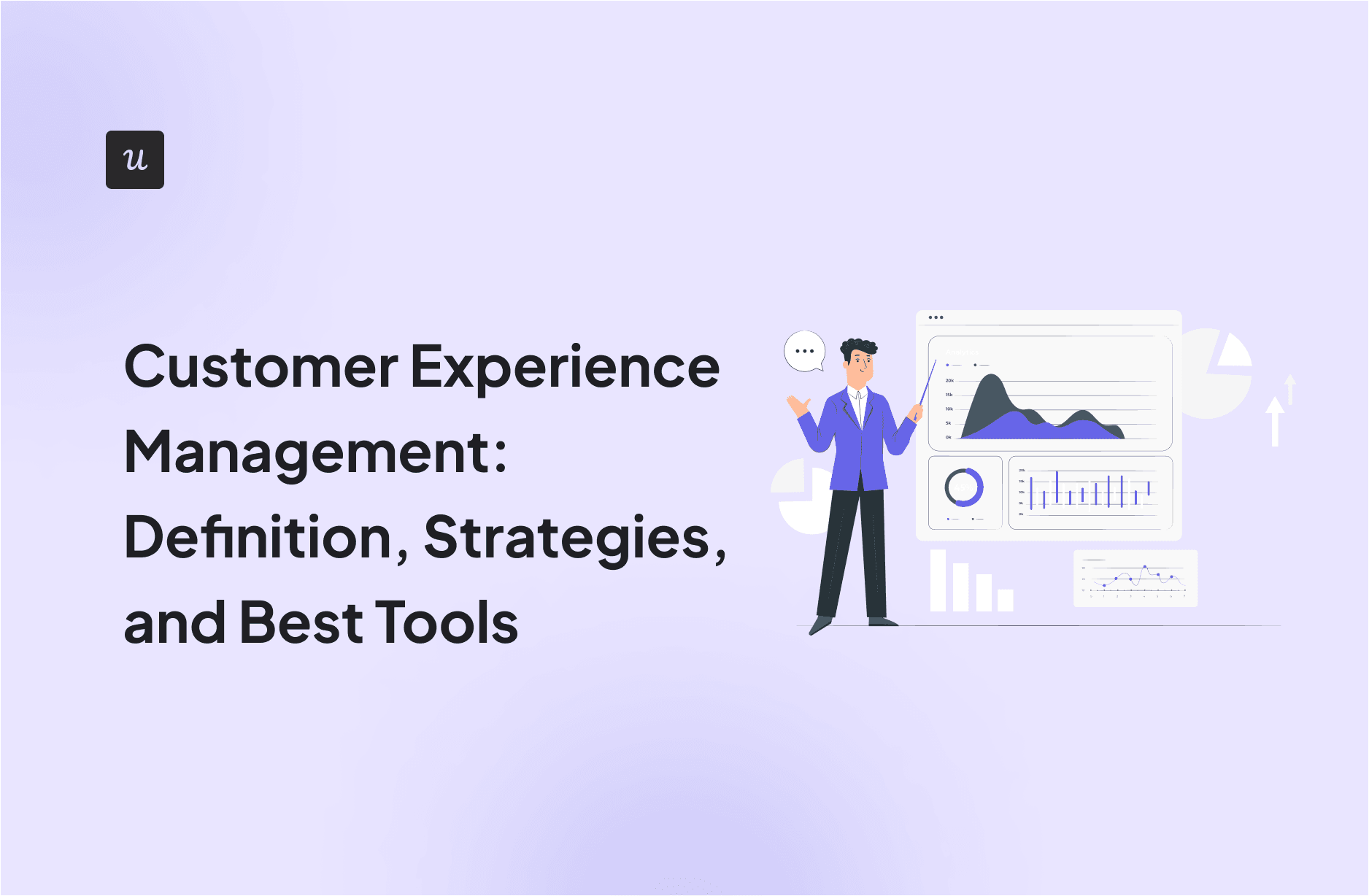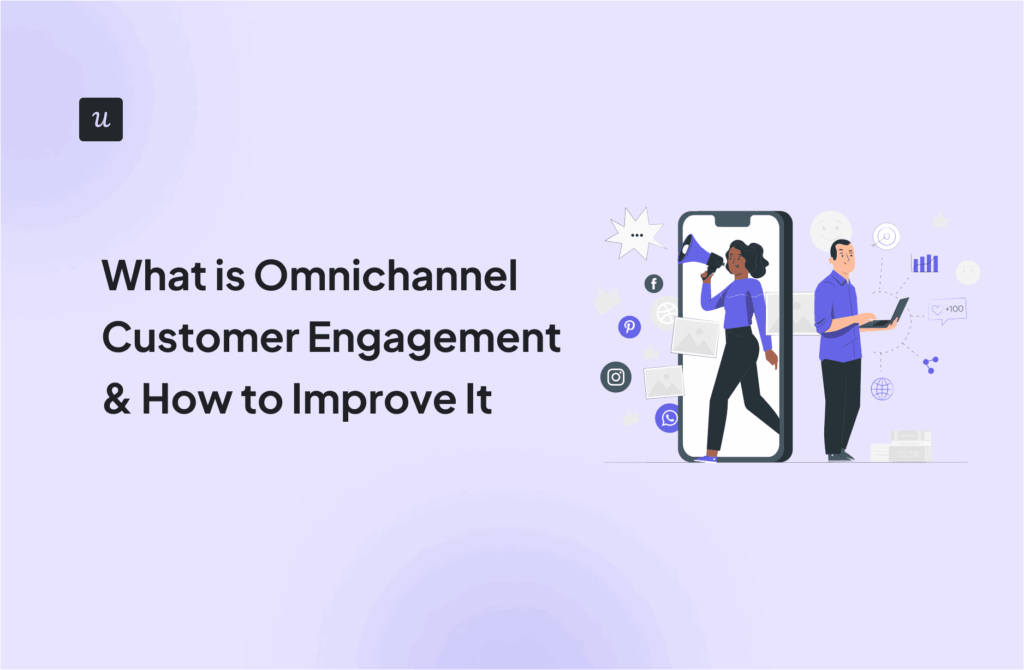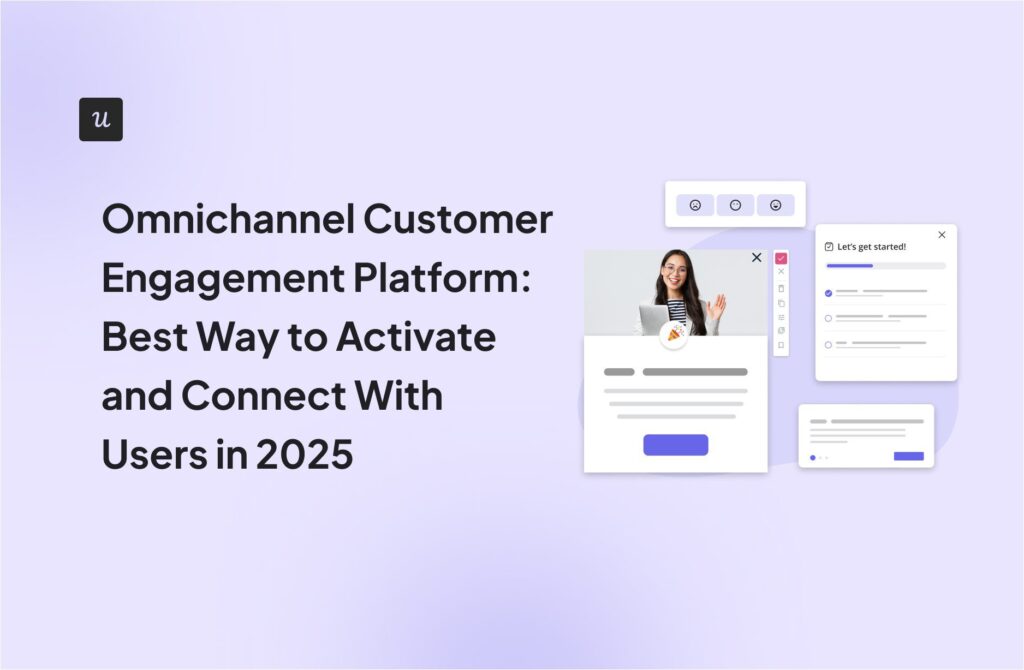
Customer Experience Management: Definition, Strategies, and Best Tools
Do you know what one of the major causes of retention for your product is? Customer satisfaction and customer experience management are the best ways to prioritize and improve this.
This article provides some great strategies to create satisfied customers by optimizing product experiences and also shares the right tools for the job.
Get The Insights!
The fastest way to learn about Product Growth, Management & Trends.
What is customer experience management?
Customer experience management involves overseeing and enhancing every customer interaction with your business.
This process aims to improve the customer experience by understanding and influencing customer perception. It encompasses strategies to ensure each touchpoint is positive, fostering customer loyalty and satisfaction.
Customer experience management vs. customer relationship management
Customer experience management (CXM) and customer relationship management (CRM) are essential for your business, but they serve different purposes.
CXM is broader, covering all customer interactions to enhance the overall customer experience. It focuses on being proactive and experience-focused, aiming to improve every touchpoint your customers have with your business.
On the other hand, customer relationship management is more specific. It deals with data management and building relationships, often in a reactive manner. CRM systems help track and analyze customer data and manage customer interactions, primarily to strengthen relationships.
Why is customer experience management important?
Customer experience management is crucial for businesses aiming to thrive in a competitive market. Prioritizing CXM allows you to gain valuable customer experience insights that drive customer satisfaction and loyalty along the entire customer journey.
Improve customer satisfaction and retention
Creating a positive experience at every touchpoint significantly boosts customer satisfaction, leading to happier customers. When customers are satisfied, they are more likely to stay with your company longer, enhancing user retention.
Happier customers are also more receptive to upgrade messages and additional offerings, which can increase their overall lifetime value. Focusing on customer experience management ensures that each interaction contributes to a stronger, more loyal customer base.
Foster customer loyalty and advocacy
A consistent and positive customer experience fosters customer loyalty, encouraging repeat business and long-term relationships.
These repeat customers often become advocates, actively promoting your brand and helping to attract new customers, which enhances customer advocacy. This strengthens your community and reduces customer acquisition efforts and costs.
Gain a competitive advantage
Many companies can achieve feature parity, but a great customer experience isn’t that easily replicable. Avoiding the feature parity trap and focusing on delivering exceptional experiences can set you apart from competitors.
This focus on product differentiation through superior customer experiences ensures your business remains competitive and unique.
Develop valuable products and features
Customer feedback is at the core of effective customer experience management. Consistent customer feedback collection allows businesses to understand customer needs and preferences, leading to better product development and improvements.
Integrating feedback into your product development process ensures that your offerings remain relevant and valuable to your customers.
Strategies to create a great customer experience
Implementing effective strategies is key to delivering an exceptional customer experience. By focusing on customer experience improvement, you can ensure each interaction leaves a positive impact and builds lasting customer relationships.
Personalize the customer journey for different segments
Creating personalized experiences to meet the needs and preferences of different segments is essential for a successful customer experience strategy.
Conducting welcome surveys can gather valuable customer data from the start. This data allows you to understand individual customer preferences, behaviors, and needs, which you can use to tailor a personalized user experience for each segment. Personalizing the customer journey makes them feel valued and understood, increasing their satisfaction and loyalty.

Guide users toward success with a checklist
Exploring a new product can be overwhelming for users. Providing a guided experience through a user onboarding checklist can significantly ease this process.
A checklist helps users understand how to use your product effectively and achieve their goals, reducing confusion and frustration.
By tracking their progress with a progress bar (often added in checklists), users are motivated to complete all tasks, which enhances their overall experience and the perceived product value.

Analyze customer behavior to remove friction points
Analyzing user behavior is crucial for identifying and removing friction points that hinder a smooth user experience. You can pinpoint areas where customers encounter difficulties or drop off using advanced analytics. Funnel analysis is an effective method for visualizing user behavior.
Resolving these issues ensures a seamless and enjoyable experience, leading to higher customer satisfaction and retention. This data-driven approach is invaluable for product managers making informed decisions.

Collect feedback to understand customer expectations and exceed them
Collecting and analyzing customer feedback is key to understanding customer needs and expectations directly from the source. Implementing methods to gather quantitative and qualitative feedback ensures you capture a complete picture of customer sentiments.
You can automate and scale this process using in-app surveys. Feedback allows you to make informed changes and improvements, enhancing the overall customer experience and exceeding customer expectations.

Provide proactive support through a resource center
A resource center empowers customers to find answers and solutions independently, reducing their reliance on support teams. This form of proactive support ensures that customers have access to help whenever they need it, 24/7.
Providing comprehensive guides, FAQs, and tutorials enables customers to solve problems quickly and efficiently, enhancing their overall experience and satisfaction.

Localize the customer experience to increase inclusivity
In a global market, it’s crucial to recognize that only some of your users speak English as their first language. Localizing in-app content and translating copy into different languages improves user experiences and makes your product more accessible and user-friendly.
This inclusivity can be achieved using tools like Userpilot, which translates your product’s microcopy with AI into up to 130+ languages.

Create customer loyalty programs to engage power users
Loyalty programs are effective in incentivizing repeat usage and engagement. Rewarding customers for their loyalty fosters a sense of community and belonging.
Which customers should be involved in reward programs? Engaging power users (those who use your product most extensively) in these programs can turn them into brand advocates who promote your product.

Conduct A/B tests to monitor what improves the customer experience
A/B testing allows you to compare different page versions, feature, or flow versions to determine which performs better. This method is crucial for continuously refining and improving the customer experience.
By regularly testing and analyzing results, you can make data-driven decisions that enhance user satisfaction. Avoid common mistakes to ensure your tests are effective and provide valuable insights, leading to ongoing improvements in customer experience.

Which features to look for in customer experience management software?
When selecting customer experience management software, choosing a tool that offers comprehensive features to enhance customer interactions and satisfaction is essential. Here are key features to consider:
- Personalization capabilities: Look for CXM software that offers robust personalization capabilities. Personalization can range from customized messages to individualizing the customer journey, ensuring each customer feels valued and understood.
- Analytics and reporting: Effective CXM software should include advanced analytics and reporting. This feature helps you track and analyze user behavior, identify patterns, and gain insights into how customers interact with your product.
- Feedback collection: Choose software that offers versatile feedback collection methods, such as surveys and feedback widgets. This feature ensures you can gather quantitative and qualitative data to continuously improve your offerings.
- Automation: Automation tools are essential for streamlining your CXM processes. Look for software that provides robust automation capabilities, such as automated responses, workflows, and personalized communications. Automation helps save time, reduce manual tasks, and ensure consistent customer engagement.
- Integrations: Ensure the CXM software can integrate seamlessly with your existing systems and tools. Strong integration capabilities enable you to connect with CRM systems, marketing platforms, and other essential business applications. This connectivity allows for a more cohesive and efficient workflow, enhancing overall customer experience.
- Scalable pricing: Consider software with scalable pricing options. It is important to choose a solution that can grow your business without causing financial strain. Look for flexible pricing models that cater to different business sizes and requirements, ensuring you can scale your CXM efforts as needed.
- Security: Security is paramount when handling customer data. Ensure the software complies with industry standards and certifications, such as SOC 2 Type 2. Robust security measures protect sensitive information, build customer trust, and help you meet regulatory requirements.
Top 3 customer experience management tools for SaaS companies
Choosing the right customer experience management tool can significantly enhance your ability to deliver exceptional customer experiences. SaaS companies can leverage the below top three tools to improve customer satisfaction and loyalty.
Userpilot
Userpilot is a leading customer experience management tool designed to help SaaS companies create personalized, engaging user experiences. It offers a comprehensive suite of features that enable businesses to understand, segment, and delight their customers effectively.
- Segmentation: Userpilot allows for advanced customer segmentation, enabling you to target specific groups based on their behavior, feedback, and usage patterns.

- In-app experience builder: Userpilot’s in-app experience builder allows you to create interactive and intuitive onboarding experiences. This feature lets you guide users through your product, ensuring they understand its value and functionality quickly and effectively.

- In-app resource center: Userpilot’s in-app resource center provides users with on-demand access to helpful resources and information. This feature empowers customers to find solutions independently, reducing the load on your support team.

- Analytics: Userpilot offers robust analytics capabilities, including behavioral analysis reports and analytics dashboards. These tools help you track and report user interactions, providing valuable insights into how users engage with your product and where improvements can be made.

HubSpot
HubSpot is a well-known platform that provides a comprehensive suite of tools for marketing, sales, and customer service teams. Its robust features are designed to help businesses grow by improving customer relationships and delivering exceptional customer experiences.
- Analytics: HubSpot offers extensive analytics capabilities that provide deep insights into customer behavior, campaign performance, and overall business health.
- Integration: HubSpot supports various integrations, allowing you to connect with various tools and platforms seamlessly. This ensures a cohesive workflow and helps you manage customer data effectively across different systems.
- Surveys: HubSpot’s built-in surveys make collecting customer feedback easy. You can create and distribute surveys to gather valuable insights directly from your customers, helping you better understand their needs and preferences.

Qualtrics
Qualtrics is a leading experience management platform that helps businesses capture and analyze customer insights to improve their overall experience.
With advanced tools for customer sentiment analysis, AI-driven insights, and comprehensive feedback collection, Qualtrics empowers companies to understand and act on customer needs effectively.
- Customer sentiment analysis: Qualtrics excels in customer sentiment analysis, allowing you to understand how customers feel about your products and services. By analyzing this, you gain valuable insights into customer emotions and perceptions, helping you make informed decisions to enhance their experience.
- AI-driven insights: Leveraging the power of AI, Qualtrics provides predictive analytics and actionable insights. AI helps you identify trends, predict user behavior, and recommend actions to improve customer satisfaction and loyalty.
- Customer feedback surveys: Qualtrics offers robust tools for creating and distributing customer feedback surveys. You can use its drag and drop builder to create surveys easily.

Conclusion
A successful customer experience management solution creates happy customers who turn into loyal customers and lowers the churn rate. You want to deliver personalized experiences to help increase customer satisfaction and gain a deeper understanding of your customers by conducting customer surveys.
Both of these are possible with Userpilot, as is the ability to conduct A/B tests and analyze customer touchpoints to make the right improvements. If you want to know more, book a demo now!






